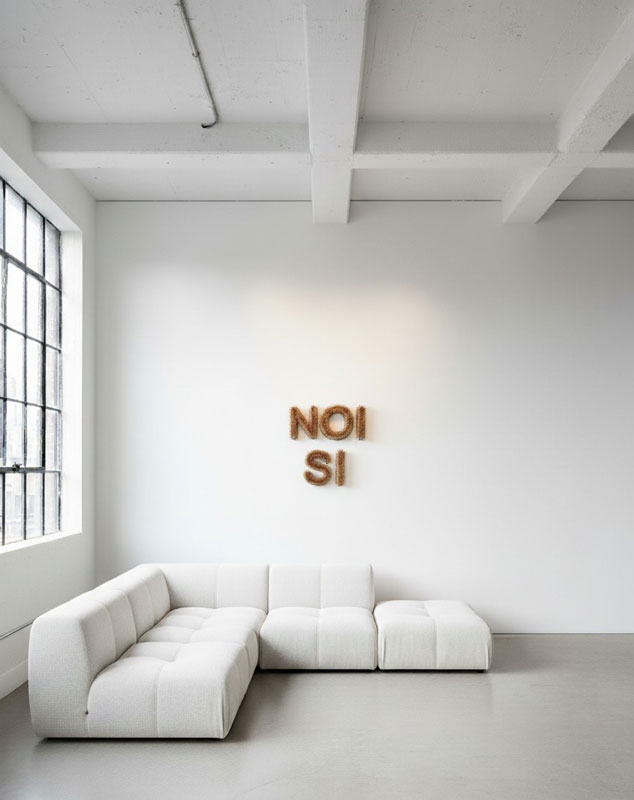

The work is a wall inscription composed of sharpened pencil tips. The text, “NOI SI,” appears simple, almost enigmatic, yet it carries a dense relational and symbolic weight. It is an affirmation that does not negate, but includes: it speaks of belonging, of sharing, of silent complicity. It does not describe what one is or does, but asserts a possible unity, an intimate consensus built in the unspoken. In this ambiguity lies the strength of the work: it safeguards an affective code, a silent narrative that presents itself to the viewer without fully revealing its meaning. Its sense is not explicit because it does not need to be; the work holds an invisible list of meanings decipherable only by those who are part of it. In this way, the inscription becomes an affective code, a declaration that is both private and universal.
L’opera è una scritta murale composta da punte di matite temperate, la scritta, “NOI SI”, appare semplice, quasi enigmatica, ma racchiude una densità relazionale e simbolica. È un’affermazione che non nega, ma include: parla di appartenenza, di condivisione, di complicità silenziosa. Non descrive ciò che si è o ciò che si fa, ma afferma un’unità possibile, un consenso intimo che si costruisce nel non detto. In questa ambiguità risiede la forza dell’opera: essa custodisce un codice affettivo, una narrazione silenziosa che si offre allo sguardo ma non si concede del tutto alla comprensione. Il senso non è esplicito perché non deve esserlo: l’opera custodisce una lista invisibile di significati, che solo chi ne fa parte può decifrare. In questo modo, la scritta diventa un codice affettivo, una dichiarazione riservata ma universale.